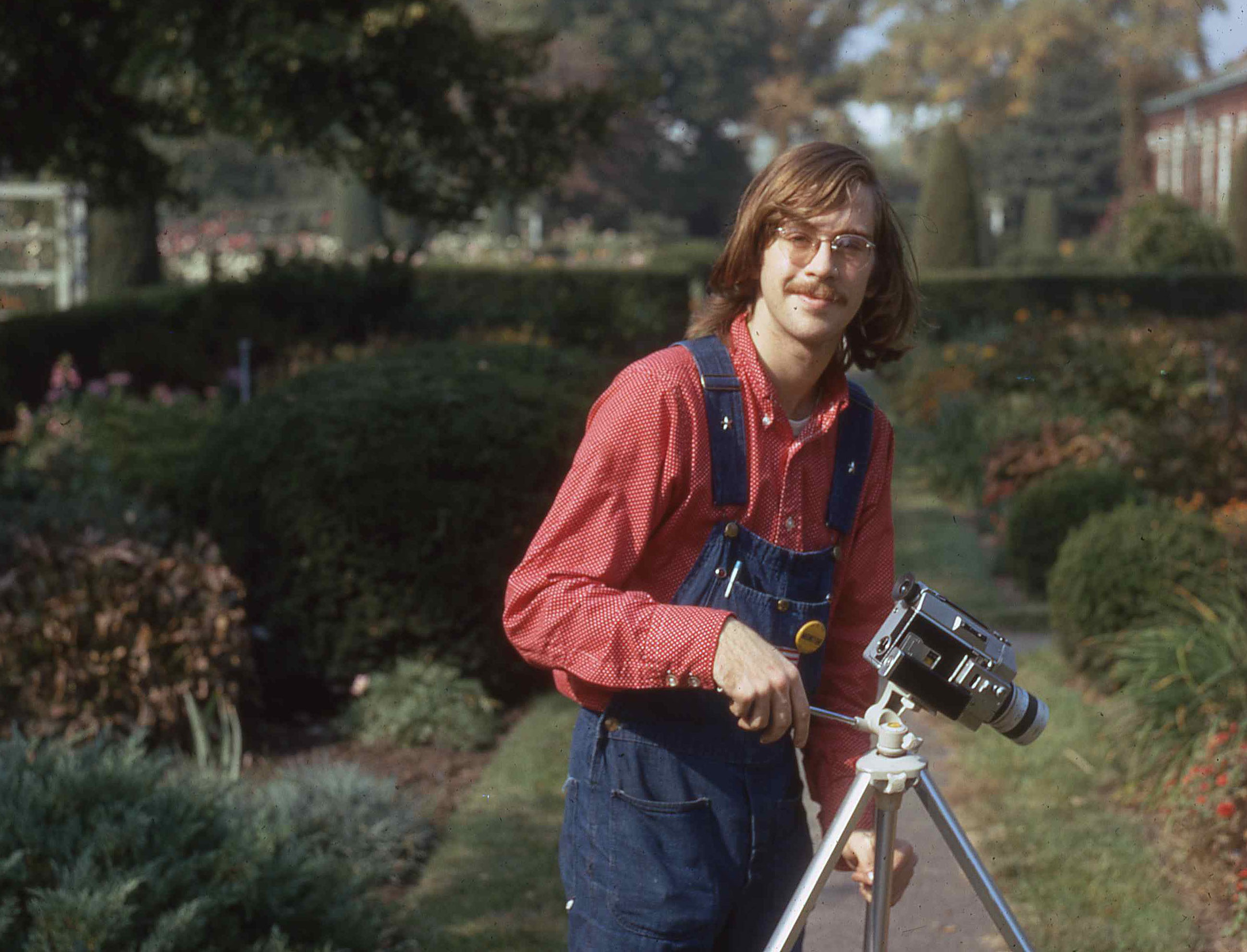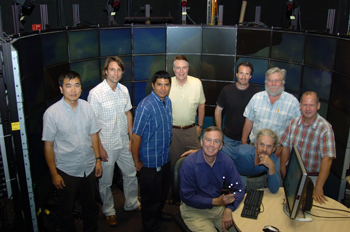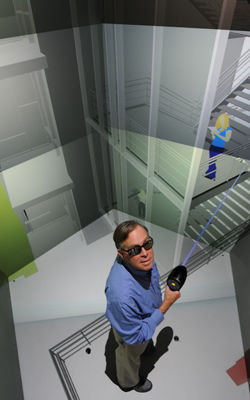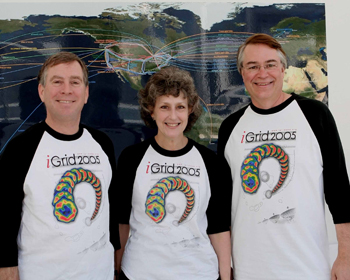Calit2 Profile: Visualization Research Pioneer Tom DeFanti
San Diego, June 17, 2010 -- Calit2 Director of Visualization and Senior Research Scientist Tom DeFanti recently returned from Hamburg, Germany, where he led a team of researchers from Calit2’s Virtulab, a partnership with Saudi Arabia’s King Abdullah University of Science and Technology (KAUST). In KAUST’s exhibit at the international supercomputing conference, ISC '10, the team gave demos of scientific visualization systems such as the Virtulab-developed NexCAVE, and software applications running on it.
|
From there he joined the University of Illinois at Chicago (UIC) computer-science faculty, and together with Dan Sandin, set up the Electronic Visualization Laboratory (EVL) -- which 37 years later is still going strong.
In 1976 DeFanti helped computer animation pioneer Larry Cuba create the computer graphics for the 1977 blockbuster, Star Wars, using the same graphics language he developed for his Ph.D. (To watch a short video by Cuba about the graphics click here.) In 1977 DeFanti became secretary of the ACM/SIGGRAPH organization, as well as becoming active in working on and growing its annual conference from hundreds to thousands of attendees. He was tenured in 1978 and promoted to associate professor. The same year he began doing research and development for Bally/Midway, the maker of PacMan and Space Invaders in the U.S. He also created the operating system and programming language of one of the first "personal computers", the Bally Home Library Computer, which later was produced as the Datamax UV-1, a system popular with digital video artists for many years.
|
In 1986 DeFanti started his long association with Larry Smarr, then director of the National Center for Supercomputing Applications at the University of Illinois at Urbana-Champaign. Soon after he hired Maxine Brown to be EVL's associate director, and with Smarr's guidance, DeFanti and Brown helped propel EVL from a modest lab to the best-funded lab at UIC for many years.
The affiliation with Smarr led DeFanti, Brown and TAMU's Bruce McCormick to edit the acclaimed 1987 report for the National Science Foundation, "Visualization in Scientific Computing." Another high point was SIGGRAPH '92, which Brown chaired. The conference attracted 35,000 delegates to Chicago, and under DeFanti's leadership, SIGGRAPH for the first time had access to 45 Mbps networking. Also debuting at the 1992 conference was the CAVETM virtual reality system, conceived by DeFanti and Sandin.
|
Based on the success of SC '95, DeFanti and Brown submitted an unsolicited proposal to NSF to build STAR TAP, an international advanced networking exchange "hub" in Chicago for research and education networks. Started in 1997, the hub has grown substantially. Now known as StarLight, it is managed and led by close colleague Joseph Mambretti of Northwestern University, and it has become the largest such exchange in the world. StarLight is also a model for building such exchanges in many countries that form the Global Lambda Integrated Facility (GLIF).
For almost 20 years DeFanti, Sandin, Greg Dawe and current EVL director Jason Leigh built and networked CAVEs and then started creating huge, tiled LCD display walls. In 2004, they built a 100-million-pixel tiled display system at EVL. Meanwhile, Larry Smarr had left the University of Illinois for the University of California, San Diego in 2000. The following year he became the founding director of the California Institute for Telecommunications and Information Technology (Calit2), a partnership of UC San Diego and UC Irvine.
|
In 2004 DeFanti achieved emeritus status at UIC and joined Smarr's still-new venture, Calit2, as a research scientist and Director of Visualization. That year the DeFanti clan – including wife Kathy Tanaka and sons Ian (born 1987) and Connor (1992) moved to Del Mar, Calif., and some of DeFanti's longtime EVL colleagues also moved west: Greg Dawe now works at Calit2, and Dan Sandin has become a frequent visitor and consultant, spending as much as one week a month in San Diego at Calit2.
DeFanti, Smarr and colleagues Laurin Herr and Natalie Van Osdol launched the CineGrid initiative in 2005 to fully exploit and leverage Calit2's state-of-the-art digital cinema installation. CineGrid, a non-profit organization, has now attracted a worldwide membership of dozens of universities, companies, networks and non-profits (including the Academy of Motion Pictures Arts and Sciences).
Between 2005 and 2007, DeFanti and Dawe built the StarCAVE, a 34-projector CAVE, and an 80-million-pixel version of Dan Sandin's Varrier autostereoscopic virtual reality display system (providing an immersive display experience in 3D -- without requiring the use of 3D glasses).
|
DeFanti also leads Calit2's five-year collaboration with KAUST to develop a number of 3D, high-resolution displays, as well as teleconferencing, networking, computation, and storage, and their applications to research science and engineering needed for future energy sustainability.
It is a measure of the success of DeFanti's efforts in visualization, high-speed networking and collaborative environments that he uses this technology to work daily with his colleagues at UIC, UC San Diego, KAUST and other institutions -- extending the transformative capabilities of cyberinfrastructure.
Related Links
Media Contacts
Doug Ramsey, 858-822-5825, dramsey@ucsd.edu






